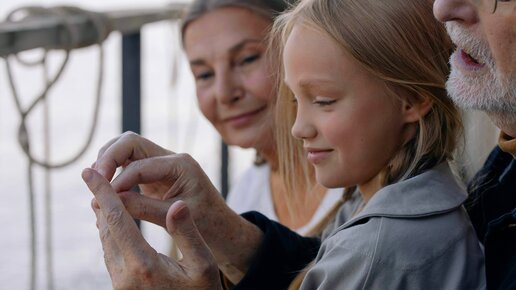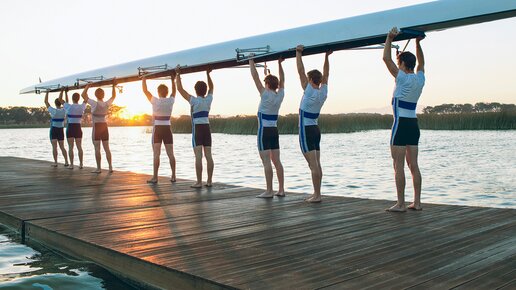The right movement and bone-relevant nutrients are the ideal basis for strong bones. But do you know your own bone density? You can find this out with a simple bone density measurement. We explain how this works, where to have your bone density measured, when it makes sense to have it measured and much more.
What is a bone density measurement?
A bone density measurement is an important step in sounding out your own bone health. This procedure determines the density and stability of your bones. The measurement is preferably performed in the region of the lumbar spine or the femoral neck.
Measure bone density early: When does it make sense to have a bone density measurement taken?
Osteoporosis is a bone disease that approaches stealthily. Without symptoms for a long time, doctors often only come across the disease at an advanced stage (e.g. with rapid size loss, due to bone fracture).
People who are already aware of their potentially "weak" bone strength at a young age are thus clearly at an advantage. This knowledge gives them the opportunity to take bone-strengthening countermeasures early on and thus stabilise or slow down the natural bone degradation.
A low maximum bone mass is considered an important risk factor for later osteoporosis. Since we reach our maximum value between 25 and 30 years old, a measurement at this age already provides the first valuable evidence of our bone health.
How is bone density measured?
The best known method for measuring bone density is the so-called DXA measurement (also: DEXA scan). This is an X-ray procedure that exposes the femoral neck and lumbar spine to a minimum radiation dose and measures the attenuated radiation.
The so-called Echolight® device works completely without exposure to radiation. Echolight® is a certified ultrasound-based measuring device that provides qualified statements on bone density or the quality of bones. This is based on REMS technology (Radiofrequency Echographic Multi Spectrometry). The non-invasive, pain-free and radiation-free procedure measures how quickly ultrasound waves cross the spine – and the femoral neck if necessary – and how much they are weakened. This technology, which has been tested in extensive clinical studies, achieves reliable and meaningful measurement results that come very close to the gold standard in this field, the DXA measurement, and that are very well suited for early detection. In both cases, the bone density is provided, which corresponds to the mineral content of the bone.
Procedure for bone density measurement at BIOGENA
Would you like to take a free Echolight® bone density measurement at BIOGENA or one of our partners? Then proceed as follows:
- Register online for a complimentary bone density measurement in Austria or Germany
- You will receive a confirmation email from us.
- Please arrive in time for your appointment and place yourself in the experienced hands of our specialist staff.
- After a brief preliminary discussion, the Echolight® device is set to your personal key data (e.g. age, weight).
- Your bone density will now be determined in a completely pain-free process. For this purpose, the bones are covered with waves above the hearing frequency range (ultrasound). The examination is performed fully dressed and conveniently lying down.
After approx. 10 minutes, the measurement is completed. The fully automated evaluation of your bone density will be handed out to you in writing immediately after the measurement. If you have any further questions, you should contact your doctor.
Where can your bone density be measured?
- In selected BIOGENA PLAZAs, stores and biohacking labs (using Echolight®) (sites & free appointments see below)
- Maikai Salzburg (using Echolight®)
- In special diagnostic institutes
- In a specialist practice
- In hospitals with radiological or nuclear medicine departments
Who carries out the bone density measurement?
The DXA bone density measurement is performed by specialists, in hospitals or specialist diagnostic centres – since this is an X-ray examination, special medical personnel are required. The ultrasound-based Echolight® procedure is primarily offered by personnel trained by the manufacturer in special preventative and biohacking centres such as the BIOGENA bone density bus, the BIOGENA PLAZA Vienna & Salzburg, selected BIOGENA stores and biohacking labs as well as the Maikai fitness studio in Salzburg. The Echolight® measurement at BIOGENA serves to support early detection and does not constitute a diagnosis or replace medical advice. The measurement offers opportunities to take preventive or therapeutic measures (in consultation with healthcare professionals).
What does a bone density measurement cost and who will cover the cost?
In Austria, a bone density measurement (DXA measurement) costs approx. 40-70 euros. In the following cases, the costs are covered by the ÖGK (Österreichische Geodätische Kommission [Austrian Geodetic Commission]):
- In women over the age of 65 in men over the age of 70 .
- In women with risk factors from the age of 60 .
- In people with high-risk factors (e.g. severe diseases, cortisone therapy)
Bone density measurement values & their classification
The so-called T-value (also: T-score) is determined to assess bone density. This value indicates how much a person’s measured bone density differs from the bone density of same-sex young healthy adults (30 years old). The following table contains the valid classification of the WHO (World Health Organisation):
|
T-Score |
Classification |
| Higher or equal -1 | Normal bone density |
| -1 to -2,5 | Osteopenia (=osteoporosis precursor) |
| -2,5 or lower | Osterporosis |
Conclusion: The sooner people know about their “bone weakness”, the sooner they can take bone-healthy countermeasures. With the “Strong bones – Strong life” promotion, BIOGENA and its bone-strong partners offer free and radiation-free bone density measurements (Echolight®) for all those interested. In the event of abnormal measurement results, a timely discussion with a doctor can be sought and the further procedure discussed.
Frequently asked questions about bone density measurement
The bone density measurement is carried out in a completely relaxed state while lying down. The density of the bone is measured in a completely pain-free procedure either by X-ray radiation (DXA method) or by radiation-free ultrasound (Echolight®).
A bone density measurement takes about 30 minutes at BIOGENA and consists of a ten-minute measurement and a subsequent discussion with recommendations for general lifestyle interventions. In addition, we recommend consulting a doctor.
In the case of osteoporosis, there is a right every five years to a bone density measurement (DXA scan) paid for by the health insurance fund, and earlier in justified exceptional cases. Private scans, for example in BIOGENA facilities, are of course possible more often. How often a bone density measurement should be performed depends on the personal situation (e.g. risk factors, actual state of the bones) and should best be discussed with the specialist staff on site. In the context of osteotherapy, a measurement every 6-12 months makes sense, since it takes a certain time for the bone condition to change.
Today, modern DXA instruments only emit a low radiation exposure, which is not associated with any risks or side effects. If you would like to avoid radiation altogether, you can use the Echolight® bone density measurement, which uses ultrasound.
No! It is not necessary to fast for a bone density measurement.
Any clothing can be worn for a bone density measurement. This also does not have to be taken off during the scan. However, all metallic objects must be removed during a DXA measurement.
No special preparatory measures are necessary before a bone density measurement.
Reference:
Berufsverband Deutscher Internistinnen und Internisten. 2023. https://www.internisten-im-netz.de/krankheiten/osteoporose/ursachen/, Access: 28.9.2023.
Papadopoulou S.K., et al. 2021. Exercise and Nutrition Impact on Osteoporosis and Sarcopenia-The Incidence of Osteosarcopenia: A Narrative Review. Nutrients. 2021 Dec 16;13(12):4499. doi: 10.3390/nu13124499.
McCloskey, E. 2011. Preventing osteoporotic fractures in older people. Practitioner. 255(1736):19-22, 2-3.
Aktion Gesunde Knochen (ein Projekt der Österreichischen Gesellschaft für Gesundheit), 2023. https://www.aktiongesundeknochen.at/osteoporose-rund-um-die-welt-europa/, Access: 28.9.2023.
DocCheck Flexikon, 2023. https://flexikon.doccheck.com/de/Juvenile_Osteoporose, Access: 28.9.2023.
Bundesministerium für Soziales, Gesundheit, Pflege und Konsumentenschutz. https://www.gesundheit.gv.at/leben/umwelt/radiokativitaet/strahlenbelastung.html, Access: 16.9.2024.








